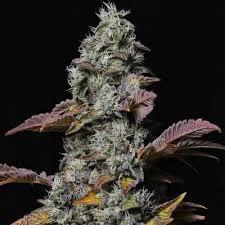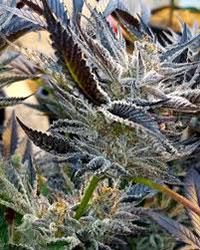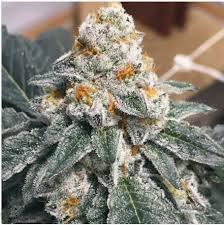Growing Cannabis Indoors
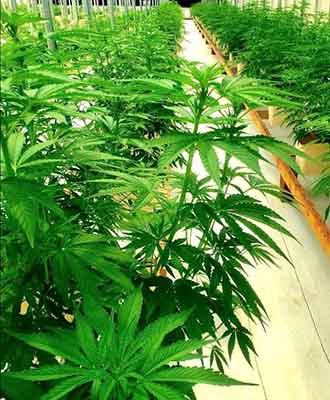
Introduction to growing cannabis Indoors
Indoor cannabis cultivation has gained significant popularity among enthusiasts and growers alike. With advancements in technology and the increasing trend of legalizing cannabis, many individuals are opting to grow cannabis plants indoors. This article serves as a comprehensive guide for those interested in exploring the world of Growing Cannabis Indoors. From setting up the growing space to understanding lighting requirements, managing temperature and humidity levels, choosing the right strain, nutrient and watering considerations, pest prevention, and harvesting and curing techniques, we will provide valuable insights and tips to help you successfully grow cannabis indoors. Whether you are a beginner or an experienced grower, this guide will equip you with the knowledge and understanding necessary to achieve optimal results with your indoor cannabis cultivation endeavors.
Introduction to Growing Cannabis Indoors
Growing cannabis indoors has become a popular option for many enthusiasts. Not only does it offer a sense of control and privacy, but it also allows for year-round cultivation regardless of the weather outside. Plus, let's face it, there's something undeniably cool about having your very own secret garden right in your home.
The Benefits of Growing Cannabis Indoors
One of the major perks of growing cannabis indoors is the ability to closely monitor and control the growing environment. You can adjust factors like temperature, humidity, and lighting to create the ideal conditions for healthy plant growth. This way, you can ensure that your plants receive all the love and care they need without relying on Mother Nature's unpredictable mood swings.
Indoor cultivation also offers an added layer of discretion, which is particularly important in areas where cannabis cultivation is not yet fully embraced. You can keep your green thumb activities under wraps, avoiding prying eyes and potential legal troubles. Plus, you won't have to worry about nosy neighbors asking questions or stealing your prized buds (as tempting as they might be).
The Legality of Indoor Cannabis Cultivation
Before diving into indoor cannabis cultivation, it's crucial to understand the legal implications in your area. Laws regarding home cultivation differ from place to place, so make sure you are familiar with the regulations specific to your region.
In some areas, growing a limited number of cannabis plants for personal use may be legal, while in others, it might still be strictly prohibited. Familiarize yourself with local laws and regulations, and if in doubt, consult with legal professionals who specialize in cannabis matters. Remember, your green thumb adventures should be stress-free, not handcuff-filled.
Setting up the Growing Space
Creating the ideal growing space is key to successful indoor cannabis cultivation. Here are a few essential steps to get you started:
Determining the Size of the Growing Area
The size of your grow space will depend on how many plants you plan to grow and the available space in your home. Whether it's a small closet or a dedicated room, choose an area that can be easily controlled and ventilated.
Choosing the Right Growing Medium
When it comes to growing medium, you have several options, such as soil, coco coir, or hydroponics. Each has its own pros and cons, so it's essential to consider factors like ease of use, nutrient availability, and water retention when making your decision. Choose a medium that suits your level of expertise and meets the needs of your plants.
Setting up Proper Ventilation
Good ventilation is essential for maintaining a healthy growing environment. Proper air circulation helps control temperature, humidity, and carbon dioxide levels while preventing the buildup of stale air and potential pests. Invest in exhaust fans, intake fans, and carbon filters to keep the air in your grow space fresh and your plants happy.
Selecting the Right Cannabis Strain for Indoor Cultivation
Indica strains tend to be more compact and bushy, making them suitable for limited vertical space. Sativa strains, on the other hand, can grow tall and lanky, requiring more room. Hybrid strains offer a mix of both qualities, allowing for more flexibility. Consider the growth characteristics of each strain to ensure they fit well within your indoor setup.
Genetic factors of Sativa vs Indica vs Ruderalis also play a role in foxtailing, Sativa-dominant strains are more susceptible than indica-dominant ones due to their longer flowering times and taller structures. And Ruderalis (used to make autoflower strains) need good lighting to produce well.
What causes Foxtailing Buds in Cannabis Plants?
Foxtailing in cannabis plants is primarily caused by environmental stresses and genetic factors. Environmental stressors include excessive heat, high light intensity (stretching towards light), nutrient deficiencies or imbalances, and inconsistent lighting schedules and to much shade time.
Considering Yield, Growth Rate, and Potency
Different strains yield different amounts of buds, grow at varying rates, and offer distinct levels of potency. Assess your personal preferences and requirements to determine which strain aligns with your desired yield, growth timeline, and desired effects. Whether you're looking for a bountiful harvest or a potency powerhouse, there's a strain out there for you.
Adapting Strains to Indoor Growing Conditions
It's important to choose strains that can thrive in the specific conditions of indoor cultivation. Some strains are more resilient to temperature fluctuations or have a higher resistance to pests, making them ideal for indoor gardening. Do your research and consult with experienced growers to select strains that will flourish under your indoor care.

Understanding Lighting Requirements
Lighting plays a crucial role in the growth and development of cannabis plants. Here are a few things to consider when it comes to lighting your indoor garden:
Choosing between Fluorescent, HID, and LED Lights
There are several lighting options available, with fluorescent, HID (High-Intensity Discharge), and LED lights being the most common choices. Each type has its advantages and disadvantages in terms of energy efficiency, heat output, and light spectrum. Consider the specific needs of your plants, your budget, and the available space when selecting the right lighting option.
Calculating the Ideal Light Intensity and Duration
The intensity and duration of light exposure can impact plant growth and productivity. Different stages of the cannabis life cycle require different amounts of light. Generally, during the vegetative stage, a light intensity of 400-600 µmol/m²/s for 18-24 hours per day is recommended, while the flowering stage benefits from a slightly lower intensity and a 12-hour light cycle. Adjust the lighting settings accordingly to optimize your plants' growth.
Managing Light Cycles for Vegetative and Flowering Stages
To mimic the natural light cycles that cannabis plants would experience outdoors, it's crucial to set up a proper lighting schedule. During the vegetative stage, keep the lights on for 18-24 hours per day. When it's time for your plants to transition into the flowering stage, switch to a 12-hour light cycle to encourage bud development. Ensuring your plants have a consistent and appropriate light cycle will help them reach their full potential.
Remember, growing cannabis indoors is both an art and a science. It takes a bit of experimentation, some trial and error, and a whole lot of love for your leafy friends. As you embark on this journey, keep an open mind, ask questions, and enjoy the process. After all, you're not just growing cannabis; you're cultivating your very own slice of paradise, right in the comfort of your home. Happy growing!
Managing Temperature and Humidity Levels
Setting up an Appropriate Temperature Range
Keeping your cannabis plants at the right temperature is crucial for their growth and overall health. Think of it like creating the perfect spa retreat for your plants. Aim for a temperature range of 70-85 degrees Fahrenheit (21-29 degrees Celsius) during the lights-on period, and slightly cooler temperatures of around 60-75 degrees Fahrenheit (15-24 degrees Celsius) for the lights-off period. It's like giving them a warm hug during the day and a cozy blanket at night.
Maintaining Optimal Humidity Levels
While you don't want your plants to feel like they're in a tropical rainforest or a desert, finding the right balance of humidity is essential. Aim for a humidity level between 40-60% during the vegetative stage and lower it to around 40-50% during the flowering stage. Too much humidity can lead to mold and mildew, while too little can cause your plants to dry out like a raisin in the sun.
Dealing with Temperature and Humidity Fluctuations
Just like our moods fluctuate, so can the temperature and humidity in your grow space. To tackle this, consider using a thermostat or a temperature/humidity controller to maintain a stable environment. You can also use fans and ventilation systems to circulate the air and regulate the temperature. Think of it as giving your plants a nice breeze on a hot summer day – they'll love you for it.
Nutrient and Watering Considerations
Understanding Essential Nutrients for Cannabis Plants
Plants need their nutrients, just like we need a balanced diet. Provide your cannabis plants with the key macronutrients (nitrogen, phosphorus, and potassium) and essential micronutrients (iron, calcium, magnesium, etc.). Feed your plants with a quality fertilizer like Holi Moli Juice that has all the necessary nutrients like nitrogen, phosphorus, and potassium. Follow the feeding instructions provided. It will supply all the specific needs of your plants. And don't forget, moderation is key, so be mindful of the quantities you're using. Give your plants the right fuel, and they'll reward you with healthy growth and potent buds.
Calibrating and Adjusting pH Levels
pH might sound like a complicated chemical formula, but it's actually just a measure of how acidic or alkaline something is. Cannabis plants prefer a slightly acidic environment with a pH range of 6.0-6.5. You can easily test and adjust the pH of your watering solution using pH testing kits or meters. Think of it as finding the perfect balance, just like adding a little lemon or honey to your tea.
Implementing Proper Watering Techniques
When it comes to watering your cannabis plants, it's all about finding the sweet spot. You want to give them enough water to quench their thirst but not drown them. Wait for the top inch of the soil to dry out before watering again, and make sure the excess water can drain away. Remember, overwatering is like suffocating your plants with too much love – they need room to breathe.
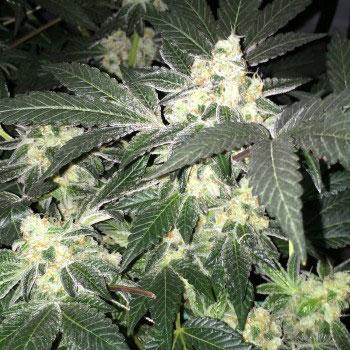
Preventing and Managing Pest Infestations
Identifying Common Cannabis Pests
Pests, just like uninvited guests at a party, can wreak havoc on your cannabis plants. Keep an eye out for common culprits like spider mites, aphids, and fungus gnats. Look for signs of chewed leaves, tiny webs, or discolored spots. If you spot any suspicious characters, it's time to take action.
Implementing Integrated Pest Management Strategies
Integrated Pest Management (IPM) is like having your own security team for your plants. Instead of relying on a single weapon, use a combination of natural pest predators, such as ladybugs or predatory mites, along with physical barriers like insect netting. By taking a holistic approach, you can protect your plants without resorting to chemical interventions.
Using Organic and Chemical Pest Control Methods
Sometimes, even with the best prevention measures, pests can still manage to sneak in. In those cases, you might need to bring in the big guns. Organic pest control methods, such as The Elinimator can help keep these unwanted visitors away and is effective against pests while minimizing harm to beneficial insects. The Elinimator is a handy tool in your organic pest control kit. It repels unwanted visitors killing them and their eggs, keeping your plants safe and sound. Just remember to follow the instructions carefully.
Harvesting and Curing the Cannabis Plants
Used every 10 days while flowering Medacann can make your buds tighter and trichromes up to 30% larger.Also hekps with preventing heat stress and high wind leaf damage, It 's a plant strentghener. Proceed as directed, and be prepared for the incredible results.
Knowing When to Harvest
Harvest time is like the grand finale of a show. The best indicator that your plants are ready for harvest is when the majority of the trichomes (those tiny resinous glands) have turned milky white. You can use a magnifying glass or a jeweler's loupe to get a closer look. Don't rush it, as it can make a significant difference in the potency and flavor of your buds.
Properly Drying and Curing the Buds
After harvesting, it's time to dry and cure your precious buds to perfection. Hang them upside down in a dark, well-ventilated area with a temperature of around 60-70 degrees Fahrenheit (15-21 degrees Celsius) and a humidity of 45-55%. This slow and steady process will allow the buds to dry gently and develop their full aroma and flavor.
Storing and Preserving the Harvest
Once your buds are properly dried and cured, it's time to store them like a prized possession. Keep your buds in airtight containers, away from light and excessive heat, to preserve their freshness and potency. You can also use humidity packs to maintain the ideal moisture level. Treat your buds like fine wine and savor them over time. Trust us, they'll reward you with an unforgettable experience.In conclusion, Growing Cannabis Indoors offers a rewarding and controlled environment for growing high-quality cannabis plants. By following the guidelines and techniques outlined in this article, you can create an optimal growing space, select the right strain, manage lighting, temperature, and humidity levels, provide proper nutrients and watering, prevent pests, and successfully harvest and cure your cannabis plants. Remember, patience, attention to detail, and a passion for cultivation are key to achieving the best results. With dedication and knowledge, you can enjoy the satisfaction of growing your own cannabis indoors while producing a bountiful and potent harvest. Happy growing!
FAQ
Is growing cannabis indoors legal?
Yes, the legality of indoor cannabis cultivation varies depending on the jurisdiction. It is essential to research and understand the specific laws and regulations regarding cannabis cultivation in your area to ensure compliance.
What is the advantage of growing cannabis indoors?
Growing cannabis indoors provides several advantages such as greater control over environmental factors like lighting, temperature, and humidity, which allows for year-round cultivation and higher quality harvests. It also offers increased security and privacy compared to outdoor cultivation.
Do I need special equipment to grow cannabis indoors?
While specialized equipment is not mandatory, certain tools and equipment can enhance the success of indoor cannabis cultivation. This may include grow lights, ventilation systems, carbon filters, timers, pH meters, and nutrient solutions. The choice of equipment depends on the scale and complexity of your indoor garden.
How long does it take to harvest cannabis plants grown indoors?
The time it takes to harvest cannabis plants grown indoors varies depending on the strain, growing conditions, and desired effects. Generally, cannabis plants require around 8-14 weeks from seed to harvest. However, it is important to closely monitor the trichomes on the buds using a magnifying glass to determine the optimal time for harvesting based on desired potency and effects.
|
